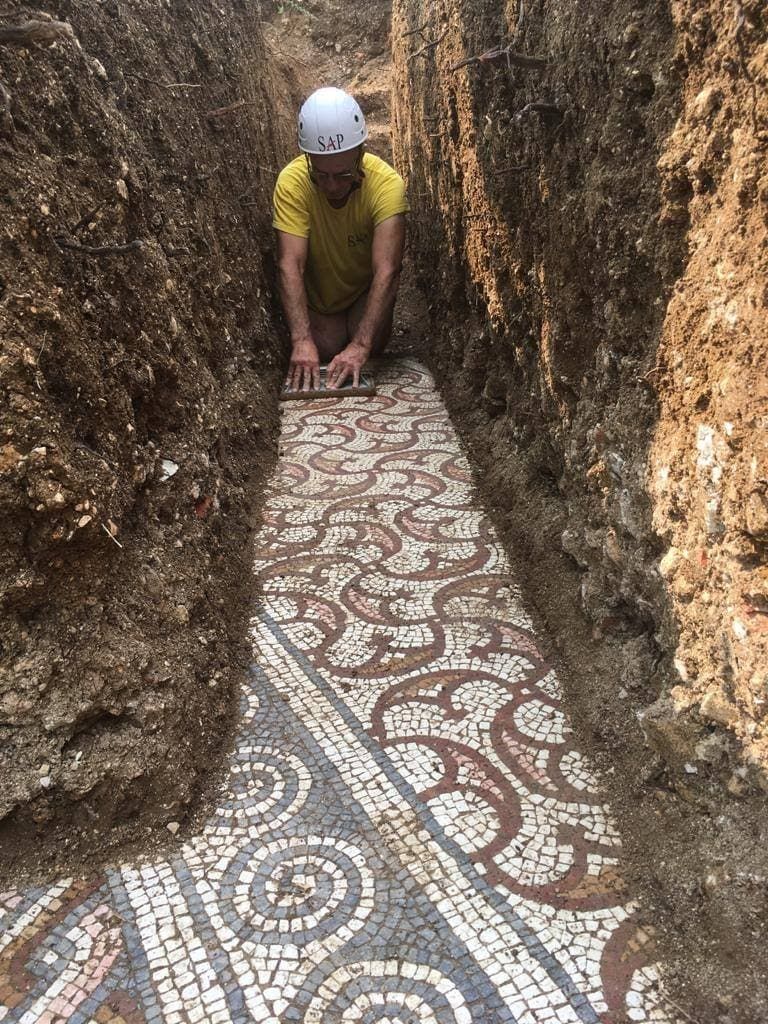

Archaeologists Discover Ancient Mosaics In Pristine Condition Under A Vineyard in Italy
Around Italy, there are hidden gems everywhere. Which isn’t at all surprising given the country’s rich history. Wine, tourism, museums — Italy has it all. It’s Disney World for anyone who appreciates the lessons of an ancient world and ancient artifacts.
Take this mosaic found unexpectedly by archaeologists in Verona while excavating a private vineyard this fall as one of the many examples of its bountiful historical record.
The floor dates back to the 1st century CE and is a notable household treasure from ancient Rome. According to locals, the location where the mosaic was found once sat atop Roman artifacts dating back to the 19th century.
Roman mosaics are common discoveries in Italy given the country’s history. Verona, in particular, was a significant settlement, in ancient Rome because of its strategic location near major roads.

According to Comune di Negrar di Valpolicella:
“After countless decades of failed attempts, part of the flooring and foundations of the Roman Villa located north of the capital, discovered by scholars over a century ago, has finally been discovered.
The technicians of the Superintendence of Verona, with a targeted soil carrotage, are partially discovering the remains of the artifact still present under a few meters of earth, with a precise goal: to identify the exact extension and exact location of the ancient construction. Subsequently, the Superintendence will connect with the owners of the area and the Municipality to identify the most suitable ways to make this archaeological treasure hidden under our feet available and visitable.”
“The result won’t come soon and significant resources will be needed. But it’s important, finally, to track the road. The Municipality will lend all the necessary cooperation and thanks from now on to the Superintendence professionals and the owners of the area for the unity of intent and the availability with which they are pursuing the project.”



If you thought that was amazing make sure you check out these ancient mosaics discovered in this ancient Greek city!
Photo credits via SAP Società Archeologica – Facebook
Recommended Videos
 The Asian emerald cuckoo (Chrysococcyx maculatus) is a species of cuckoo in the family Cuculidae.211 views
The Asian emerald cuckoo (Chrysococcyx maculatus) is a species of cuckoo in the family Cuculidae.211 views A Golden Snub-Nosed Monkey Eating Berries31 views
A Golden Snub-Nosed Monkey Eating Berries31 views-
Advertisements
 The yellow tit, Taiwan yellow tit, or Formosan yellow tit(Machlolophus holsti) is a species of bird in the family Paridae.1157 views
The yellow tit, Taiwan yellow tit, or Formosan yellow tit(Machlolophus holsti) is a species of bird in the family Paridae.1157 views Dictyophora Indusiata ( Phallus indusiatus )398 views
Dictyophora Indusiata ( Phallus indusiatus )398 views 15 Times Nature Won The Battle Against Civilization2309 views
15 Times Nature Won The Battle Against Civilization2309 views Valentine’s Day Roses48 views
Valentine’s Day Roses48 views This Rare Ball Python Snake Is Ready for Halloween29 views
This Rare Ball Python Snake Is Ready for Halloween29 views Bearded Dragon And Cat Become Best Friends163 views
Bearded Dragon And Cat Become Best Friends163 views



